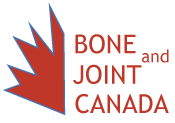The National Model of Care for hip fracture has been organized into six categories; Pre-Operative, Surgery, Postoperative, Delirium, Dementia and Depressions, Osteoporosis and Falls prevention.
There are a number of tools that have been developed at a regional or provincial level made available to support implementation of the model of care. BJC does not endorse any of the individual tools on the site.If you are unable to download the Toolkit directly from the website then right click and save the document to your computer or a USB. You will then be able to open it from there. If you cannot save the document contact Rhona McGlasson at RhonaaMcGlasson@gmail.com.
Pre-Operative Resources
Preoperative Resources covers the best practices during the pre operative stages of a patient’s care including:
- Referral processes.
- Wait times management.
- Assessing patient condition and health.
- Optimizing patient physical status.
- Educating patient and patient family.
ER and Pre operative Clinical Practice Guidelines
This document provides the clinical context for the management of patients in the Emergency Room and through their pre operative stay to maximize their medical condition and prepare them for surgery.
ER and Pre Operative Quick Reference Guidelines
This document can be used by staff within the Emergency Room as a quick reference tool to ensure the effective management of hip fracture patients.
Surgical Resources
Surgery to Optimize Function
The attached document provides recommendations on best practices in the surgical management of hip fracture patients.
Post-Operative Resources
The initial post operative care for hip fracture patients occurs through day 1 – 5 after the surgery in the acute care hospital when the focus on the medical stabilization of patients as well as mobilization and preventing complications. Once the patients initial medical needs are addressed the focus of care turn to rehabiliation and functional recovery.
Care Maps
Acute care
The care maps provide the best practice care in the post operative care of hip fracture patients in acute care. Included are all of the important considerations in the management of hip fracture patients including:
- medications
- nutrition
- mobilization
- discharge planning
The following are examples of care maps that are used in
Functional Recovery
Rehabilitation plays a significant role in improving functional recovery in all stages of care for patients who have sustained a hip fracture including through the early postoperative mobilization to secondary prevention using exercise and balance activities. This document provides a detailed look at the rehabilitation strategies to maximize functional recovery.
Falls Prevention
Hip Fractures are most often caused by a fall. As individuals over the age of 65 are 9 times more likely to fall a falls prevention is a critical component to consider in the development of a hip fracture program. There are a number of falls prevention initiatives across the country. There is a training program called the Canadian Falls Prevention Curriculum which is available at http://www.canadianfallprevention.ca/.
Falls prevention programs
There is also a number of falls prevention programs across the country that are being implemented to reduce the rate of falls.
Smart Moves
This program includes a toolkit that was designed to reduce fall in seniors either in their home or in the community. It includes recommendations on exercises that can be performed to increase strength in the muscles and the bones to improve balance.
Strategies and Actions for Independent Living
This is a comprehensive program for health care professionals in British Columbia that work in community and in a persons home. The training includes risk identification, prevention tools and protocols and a falls monitoring and reporting system.
Finding balance
This program is an awareness campaign aimed at promoting real life strategies that can reduce the risk of falls for older adults which is based in Alberta at The Alberta Centre For Injury Control & Research, is a campaign designed to increase awareness of falls prevention among older Albertans.
Osteoporosis
The majority of patients that have experienced a fractured hip are at risk of osteoporosis. As such, their prevention strategy should include the identification and management of osteoporosis. BJC support the recommendations developed by Osteoporosis Canada. The materials to support implementation can be found on the Osteoporosis Canada website in the Clinical Tools and Resources section for Health Professionals, and can be viewed and downloaded at no charge.
http://www.osteoporosis.ca/multimedia/tools.html
These tools have been developed from the 2010 Clinical Practice Guidelines for the Diagnosis and Management of Osteoporosis in Canada.

